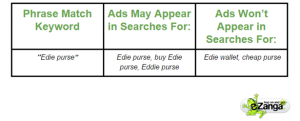April 26, 2015
Email marketing has been a focus of mine for many years. As a result, I’m often asked by the small businesses I work with for my best advice on this topic. Regardless of the industry a business is in, my four top tips remain the same:
- Consider the Consequences of Bad Data: It’s no secret that bad email addresses will lead to poor campaign results and even worse ROI. Many marketers even accept this premise as the cost of doing business in the digital age. What they don’t know is the consequences of bad data quality can be extremely severe: their company’s outgoing email campaigns can actually be shut down due to spam and the influence of data watch dogs. And once an offending company gets on the watchdogs’ list, it can take six months to get off of it. Can your marketing efforts afford to be offline that long? This threat doesn’t just impact small businesses. Large, Fortune 1000 companies have been placed on the watchdog list – and have struggled to get taken off of it.
- Be Cautious When Casting a Wider Net: Many small businesses want to use email marketing but don’t yet have a list of customer and prospect emails. As a result, many seek outside help with list building. But with the above point in mind, it’s more important than ever for marketers to do their homework before selecting an email data provider, as opposed to learning about their bad data after the campaign. There are many shady vendors willing to significantly undercut their competition, but they don’t tell you their accuracy rates are only 70 or 60 percent — or even significantly lower. Reputable email vendors will not hesitate to provide a written guarantee of 90 percent or higher email address accuracy. On top of that, they’ll also offer a credit if, for any unforeseen reason, the data falls below this rate. If your vendor refuses to provide a data quality guarantee, consider another data source.
- The Devil Is in the Details: Organizations of all sizes have embraced email marketing as the foundation of their overall marketing initiatives – over 70% of businesses now consider email as their primary communications channel. But understanding the ins and outs of this marketing strategy are essential. For example, it’s common knowledge that corporate email addresses are easier to deliver to — depending on how their company firewalls are set up — than ISP (independent service provider) addresses, such as Hotmail, AOL or even Gmail. If your target audience uses mostly ISP email addresses, make sure the email marketing tools and resources you’re using can effectively reach these customers and prospects.
- Segment for Success: Marketers also need to pay close attention to the insight that their email subscriber list provides. Being able to segment and slice and dice that list according to buyer profiles and the prospect’s position in the buyer journey is essential so that you can target your messages accordingly. The better you can drill down, the better you’ll be able to reach out to the right subscriber at the right time with the right offer. That’s why managing your email data every step of the way – as you engage with customers and prospects over the lifecycle of your relationship with them — is what separates the good marketers from the great ones. The data points you accumulate, whether through registrations on your website, opt-in forms, customer acquisition or other means, should drive your content with each subscriber.
Small businesses might be nimble, but in most cases they also lack the financial strength to sustain the consequences of email marketing missteps. Not only is your time and money at stake, but your ability to continue to effectively reach and connect with your most valuable customers and prospects is also on the line.
(160)






